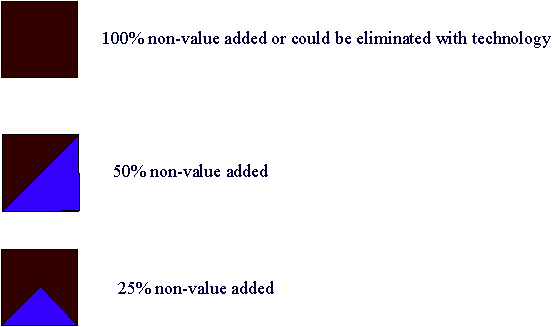- Touch time - the amount of time (usually in minutes) a person spends actually working on or "touching" the transaction.
- Lag time - the amount of time (usually in days) spent waiting for someone to begin work on the transaction (e.g. on a desk, in the mail, in a file, etc.).
- Volume - the number of transactions that go through this step in a year.
| Could this activity be eliminated if some prior activity were done differently or correctly? | If yes, then NVA. |
| Does technology exist to eliminate this activity? | If yes, then NVA. |
| Could this activity be eliminated without impacting the form, fit, or function of the stakeholder's "product?" | If yes, then NVA. |
| Is this activity required by an end stakeholder, and will that stakeholder pay for this activity? | If yes, then VA! |
Examples of non-value added activities:
| proofreading | correcting errors |
| verifying | sorting |
| reconciling | batching |
| auditing | moving from one person/office to another |
| reporting | investigating errors |


 (click on the image to take you home)
(click on the image to take you home)